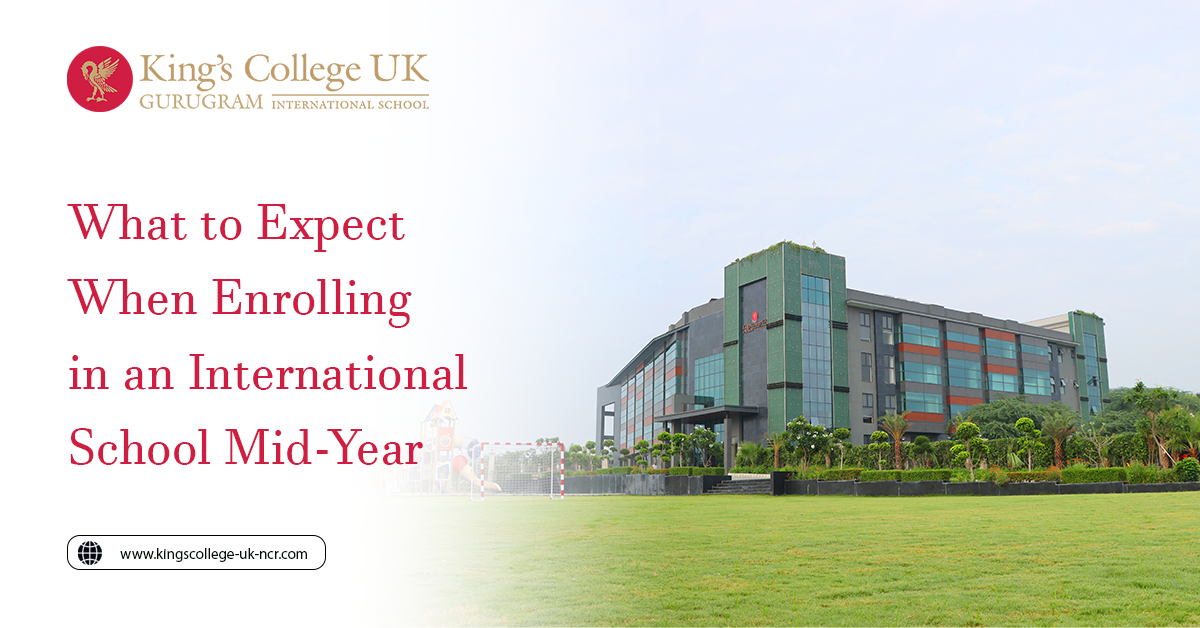
Changing schools mid-year is a significant decision for any family, especially when it involves enrolling in an international school. Whether due to a relocation, job transfer, or personal choice, transitioning your child into a new academic environment can feel daunting but it doesn’t have to be.
International schools are often well-equipped to accommodate mid-year admissions and have robust systems in place to ensure a smooth transition for students and parents alike. Here’s what you can expect when enrolling your child in an international school mid-year — and how to make the process as seamless as possible.
Flexibility in Admission and Curriculum
One of the major advantages of international schools is their flexibility. Many offer rolling admissions or mid-term intake options, particularly if they follow global curriculums such as the International Baccalaureate (IB), Cambridge IGCSE, or an American framework. These systems are designed to be portable, allowing students to transition between schools and countries more easily than national curriculums.
That said, entry may depend on available seats, prior academic records, and whether the academic calendar aligns with your child’s previous school. It’s advisable to contact schools in advance to understand their specific mid-year admission policies.
A Tailored Onboarding Process
When joining mid-year, students are often given a personalised onboarding programme. This could include:
- Orientation sessions for both students and parents
- Introduction to the school counsellor or pastoral care team
- Peer buddies assigned to help your child settle in
- Meetings with academic coordinators or subject teachers
These steps help your child integrate socially and academically without feeling overwhelmed. It also gives parents a clear view of the school’s support structure, expectations, and communication channels.
Academic Transition and Support
A common concern among parents is whether their child will be able to keep up with coursework or feel left behind. Most international schools understand this and offer:
- Academic bridging programmes
- Additional tutoring sessions or remedial support
- Assessment-based placement to ensure your child joins classes appropriate to their skill level
Teachers at international schools are typically experienced in handling diverse classrooms with students arriving from various education systems and backgrounds. They focus not just on catching students up, but also on ensuring they are emotionally and socially integrated.
Emotional and Social Adjustment
Starting at a new school midway through the year can be emotionally challenging for a child. They are entering a peer group that has already formed social connections and routines.
The best international schools in Gurugram, for instance, emphasise pastoral care just as much as academic achievement. Their programmes are designed to promote inclusion, resilience, and emotional well-being. Through clubs, house activities, cultural celebrations, and sports, students quickly find common ground with their peers.
As a parent, it’s helpful to stay engaged, attend PTA meetings, meet other families, and keep in close touch with teachers during the early months.
Administrative Requirements
Mid-year admissions often require a bit more paperwork, especially for transferring students internationally. You may need:
- Transcripts and school reports from the current academic year
- Transfer certificates or recommendation letters
- Vaccination records and medical forms
- Passport and visa copies (for expatriate students)
While this might seem tedious, most top international schools near me offer strong administrative support to guide families through the entire process.
Transportation, Uniforms, and Logistics
These practical aspects are usually sorted quickly. International schools generally have well-organised systems for transport routes, uniform suppliers, and school supplies. Even if your child joins a few months late, they’ll be kitted out and settled in with ease.
If your family is relocating, some international schools also provide support with housing or area recommendations, particularly those in expat-heavy zones like the NCR region.
Communication and Parent Involvement
Modern international schools place great emphasis on keeping parents informed and involved. Expect frequent email updates, access to digital platforms for tracking academic progress, and scheduled parent-teacher meetings, even for those who join mid-year.
Schools also encourage parental participation in events, community drives, and volunteering opportunities. This creates a sense of belonging not just for the student, but for the entire family.
Why the Right School Matters
While transitioning mid-year might not be ideal, choosing the right school makes all the difference. Parents looking at international schools in Delhi Gurgaon will find a variety of options catering to global standards, holistic development, and student-centric learning.
You’ll want to look for institutions that are not just academically reputable, but also welcoming, inclusive, and responsive to individual student needs. Read reviews, visit campuses, and speak with admissions teams before making a decision.
Final Thoughts
Joining an international school in Gurgaon mid-year may seem overwhelming at first, but it can also be the beginning of an enriching journey. With the right school, a supportive transition process, and strong parental involvement, your child can thrive both socially and academically — no matter when they begin.
So, whether you’re relocating from another city, country, or even across town, rest assured that the transition can be smooth. Just take the time to explore, ask the right questions, and trust that children are far more adaptable than we often give them credit for.

